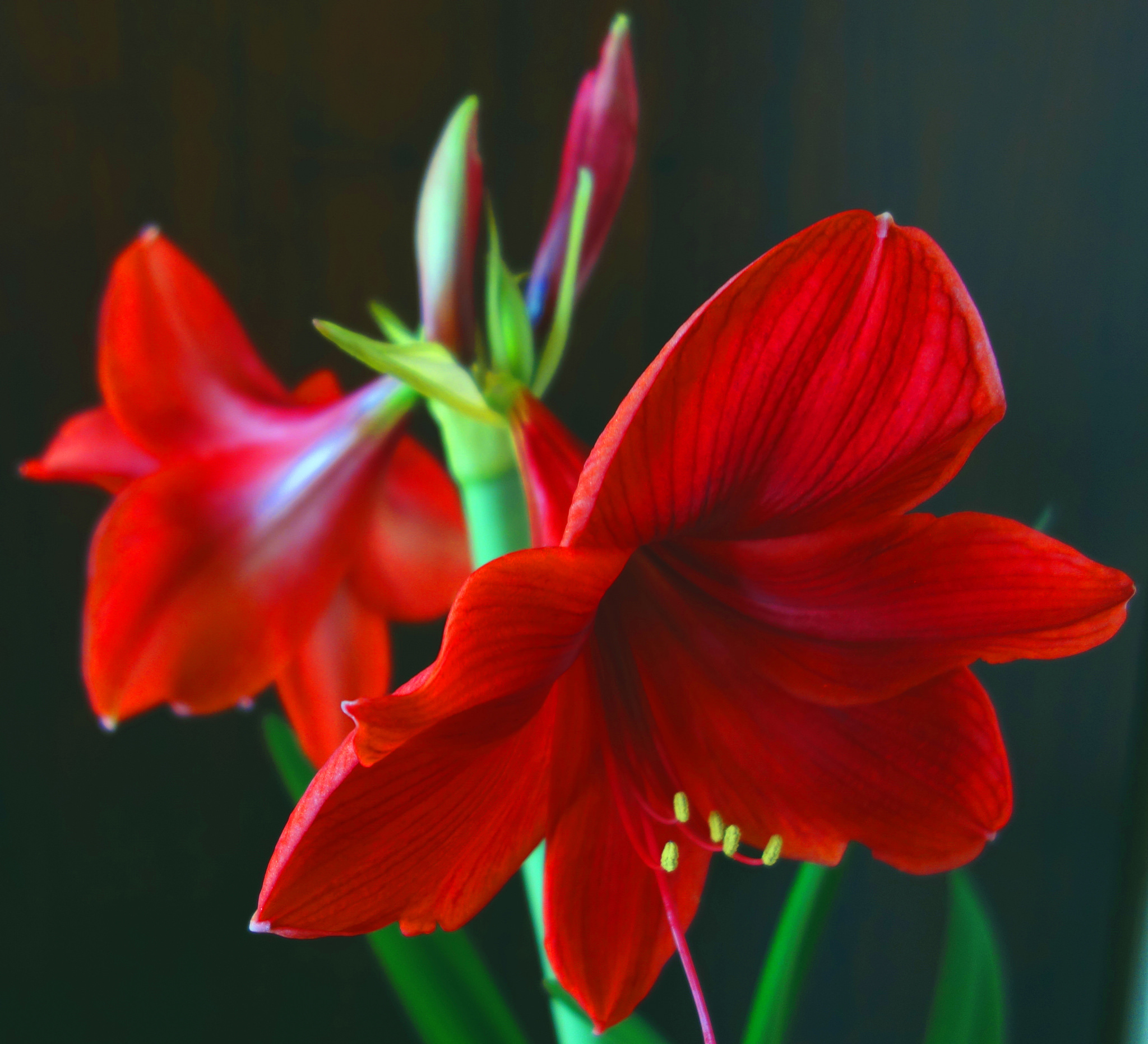The big, beautiful blooms of amaryllis are a wintertime tradition and persuading them to flower couldn’t be easier.
Native to Peru and South Africa, the genus Amaryllis comes from the Greek word amarysso, which means “to sparkle.” Some botanists believe bulbs were brought to Europe in the early 16th century and arrived in Europe in the 1800s, later moving on the U.S.
The trumpet-shaped blooms in red, pink, salmon, white and multi-colored form atop tall stems that grow rapidly from these large lily bulbs. Strappy foliage accompanies or follows the flowers.
Brooke Edmunds, a horticulturist with Oregon State University Extension Service, has advice on coaxing an amaryllis from bulb to flower, an easy proposition from start to finish.
This time of year, bulbs are commonly available already potted and growing, in kits, or as bare bulbs. Choose bulbs with bright green new growth and without spots or visible damage, she said. Some bulbs may have an offshoot growing from the base. This will eventually grow into a new bulb and can be removed and planted separately.
If you are starting with a bare bulb, find a heavy well-draining pot (lightweight pots will fall over) about 1 inch bigger in diameter than your bulb. Fill the pot two-thirds full with rich, porous soil, preferably with some peat moss and compost. Plant the bulb, keeping the upper one-third of the bulb exposed. Water sparingly until growth appears. Keep the plant above 60 degrees in a sunny area of the house.
New growth will appear a few weeks after planting. When a green shoot emerges, the plants will grow rapidly if watered freely. When the pot becomes filled with roots, apply a dilute, complete liquid fertilizer once a month. The stalk will grow toward the sun or light source, so rotate the pot and stake the stem if it grows more than 20 inches tall. Keep your plant away from heat sources such as furnace vents and wood stoves.
In five to eight weeks after planting, the amaryllis will bloom. Plan for blooms during a particular time by counting back the weeks and planting your bulbs accordingly, Edmunds said.
To keep the bulb healthy for many years, keep the plant growing once it has bloomed. Cut off spent flowering stems and continue to water and fertilize it through the winter and spring. In summer, place the potted plant outdoors and continue to water and fertilize.
In October, stop watering to allow the pot to dry out. The foliage will gradually turn yellow. Cut off the leaves to within two inches of the soil line. Leave the pot undisturbed. Water only if the bulb begins to shrivel. New growth should appear from the top of the bulb. Then follow the instructions above from the start.
Refrain from repotting your bulb every year, as the plant seems to bloom better when pot-bound. Some growers repot about every three to four years, or add new fertile soil to the top one-third of the pot each year.

